
Colca Canyon, or Cañón del Colca in Spanish, ranks high among the most stunning natural landscapes in Peru. The terrain and elevations vary dramatically, and chains of mountains guard Andean towns within the valley. Endless rows of hillside terraces and colcas, or storehouses, dot Colca Canyon and add to its picturesque scenery. Colcas gave the canyon its name, and they testify to the rise of highly organized civilizations that predated the Incas. The Colca Canyon is located 4 hours away from Arequipa City, the Colca Canyon – offers travellers the opportunity to get up close and personal to countryside life in Peru, spot soaring Andean condors, bathe in secret thermal baths, uncover jaw-dropping vistas, stay in an oasis, and hike along dusty roads for two or three days into the depths of one of the world’s deepest canyons.
Depending on your sources, Colca is either the deepest or third-deepest canyon on earth and certainly one of the most jaw-dropping. Not only is it twice as deep as the Grand Canyon (this is known with 100% certainty) but, if you ask us, we’d say it’s twice as magnificent, not least because it’s the best destination in all of Peru to spot the majestic Andean Condor, the largest flying bird on the planet.
The trip is doable in one day, however, we advise staying there for at least one night to be able to enjoy and explore better. There are plenty of accommodations in Chivay and Yanque, the popular villages nearby the Canyon. It is better to hire a tour that includes transportation from and to Arequipa instead of reaching the place on your own. It is also advisable to stay one night in Arequipa before going to the Colca Canyon trek in order to acclimatize to the altitude. If you decide to do a one-day tour, you would be leaving Arequipa at 03:30 approx and be back there at 17:30 hrs. This can be a good option for travelers with a tight schedule that does not want to miss this place. If you love to discover new types of animals and birds, this is the place for you! There, you can find over 100 kinds of birds, 300 types of plants, and more than 30 types of cactus. So if you are the type of traveler that enjoys “catching” a new bird or plant, you will enjoy this place. The villages that are located around the Canyon are known for being traditional and colorful. We bet that you will find interesting stories and many authentic souvenirs to buy. You can also take pictures with the llamas, alpacas, and if you are lucky, with a big bird related to the condors. But take into consideration that you will be able to know more in-depth this area if you stay there for at least one night.
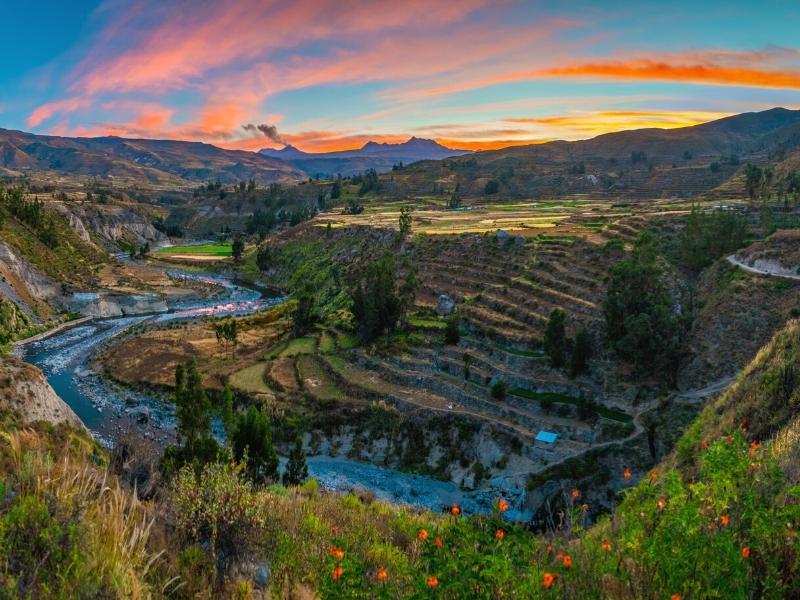

Colca Canyon is one of the best spots in South America for close-range observation of condors. Mirador Cruz del Condor is a viewing platform that encapsulates the magic of the high Andes. In front of you, the mountains rise to sky-scraping heights. Below you, the valley floor spills down to vertigo-inducing depths. And above you, Andean condors with 8-foot (2.5-meter) wingspans can be seen (with luck) soaring gracefully on the thermal drifts created in the canyon, drawing gasps from awed onlookers.
Condors play an important role in the folklore and mythology of the Andean regions throughout Latin America. Considered the animal of the spirit world according to the Inca, it is easy to understand why when you see the majestic creatures swooping through the air.

Chivay is the tourism hub of Colca and sits on the banks of the Colca River at 11,800 ft (3,600 m). The town is the linking point between the two sides of Colca Canyon and is a watershed in the region’s environmental and ecological economy. Agriculture flourishes below this elevation, while livestock and ranching dominate the upper highland economies.
In Chivay, there are plenty of choices for lodging, a lively market hosted in the plaza, and shops selling high-quality local handicrafts. Just a short walk out of town are the hot springs of La Calera – perfect for a relaxing soak after a day of exploring.
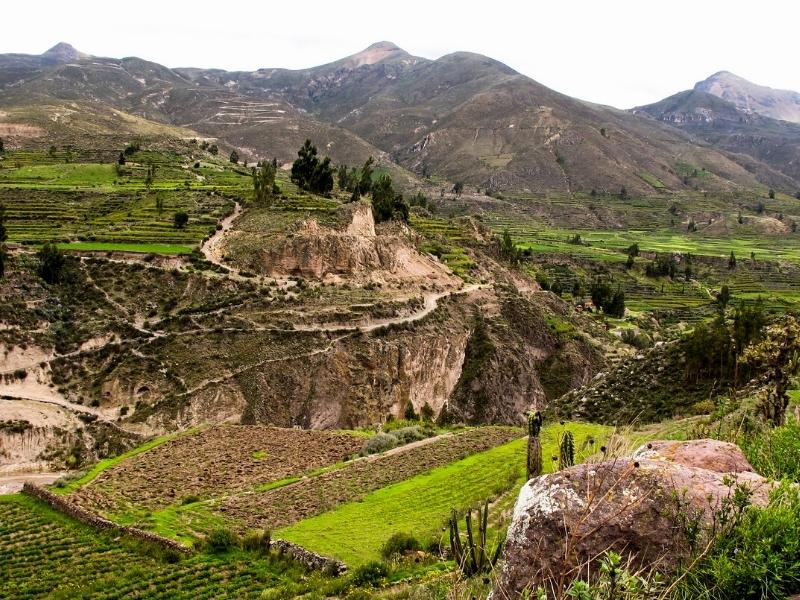
The quaint town of Yanque boasts spectacular views over the river and surrounding volcanoes such as Sabancaya and Mismi (whose glacier is the source of the Amazon River). In the morning, the central plaza serves as a stage for local schoolchildren to perform folkloric dances for tourists.
Also on the plaza, Immaculate Conception Church is considered to be the most architecturally beautiful of the valley’s churches. First built in 1560, destroyed in an earthquake 100 years later, and rebuilt again in the late 17th century, the church displays a baroque mestizo style with a carved bas relief portal entrance.
On the road out of town, you’ll see a magnificent example of pre-Columbian terracing at Llaqta Cucho whose name means amphitheater.
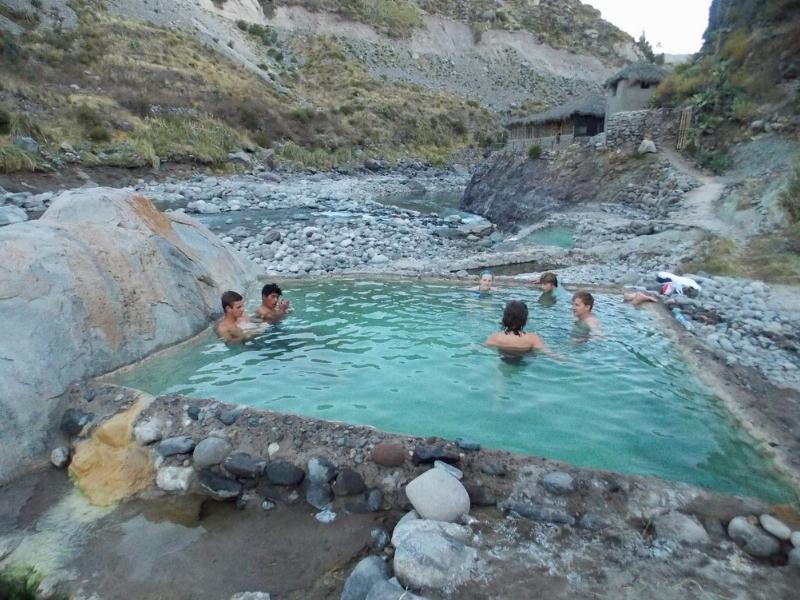
Whether you’re spending the night in Chivay or have just completed a trek, consider relaxing in one of the numerous hot springs and geysers throughout Colca Canyon. Locals believe the pools have curative properties, especially for rheumatism and arthritis.
La Calera hot springs are (3.5 km) from Chivay. Choose from indoor and outdoor pools of differing temperatures with views to the mountain landscape. Calera can sometimes have a bit of a festive atmosphere in the afternoons, so go early for a more tranquil experience.
Chacapi hot springs are (1.5 km) from the plaza in Yanque and a pleasant setting for a reinvigorating soak in thermal waters after a day of exploring. The water temperature at the pools can reach up to 122°F (50°C).

Direct your eyes to the glittering nighttime sky over Colca Canyon. In Chivay, Casa Andina Standard has a small planetarium and observatory with nightly tours offered in English and Spanish. Clouds obstruct the constellations during the rainy season in Colca, so the planetarium is generally closed between January and March. Learn about Inca astronomy and the southern night sky.
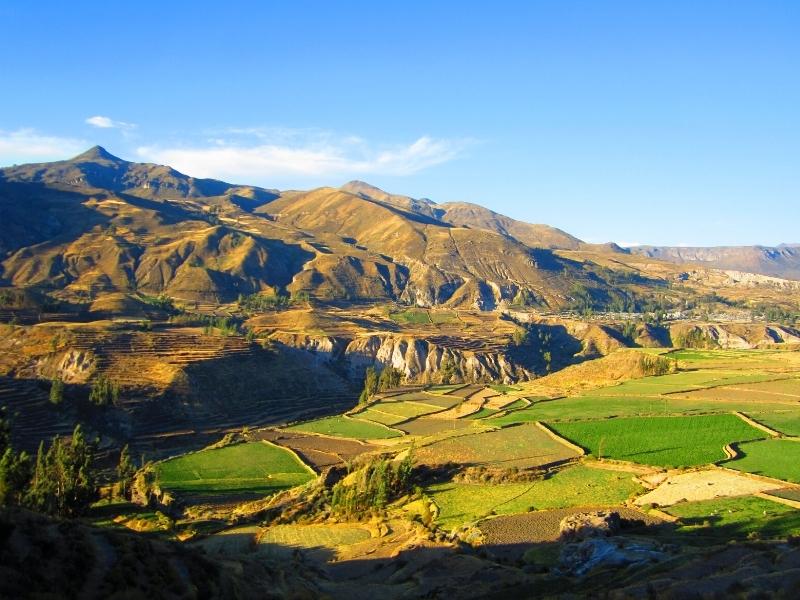
Cabanaconde is the closest town to Mirador Cruz del Condor, and the starting point for Colca Canyon treks to Sangalle. The town is great for travelers in search of day hikes as there are outstanding lookout points within easy walking distance. From the trail viewpoints of Cejana, San Miguel, and Achachiwa, you can peer down at villages tucked into the valley bottom. The sight of hulking mountains across the canyon is truly humbling. You might even see a condor or two swooping past.
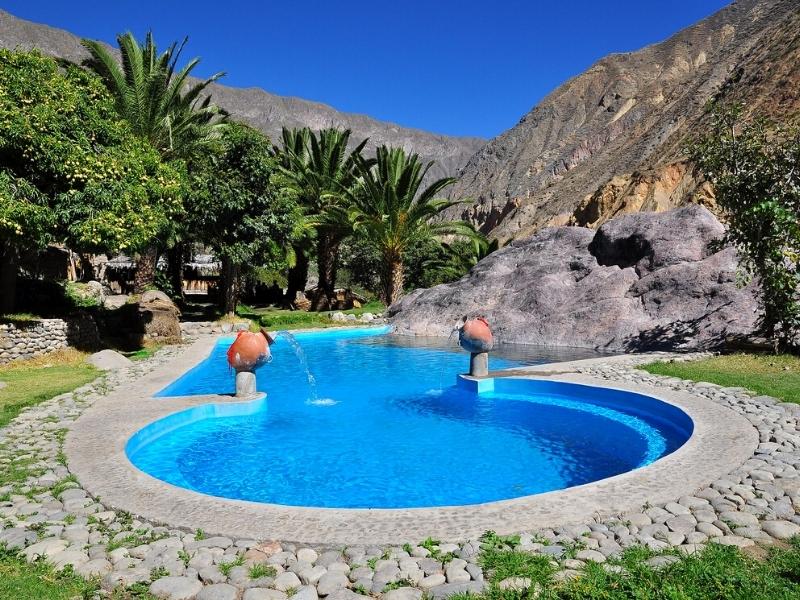
From Cabanaconde, it’s just a two- to three-hour walk down a zigzagging path to the small oasis town of Sangalle. Along the way, there are impressive views of the valley landscape. Down in Sangalle, a handful of lodges receive trekkers. Amenities are basic, but you’ll have all you need for a relaxing stay in this truly magnificent setting.

If you’re staying in Yanque, make the short side trip to Uyo Uyo, a ruined pre-Inca village built of stone blocks held together with clay mortar. The site was first occupied by the Collagua group in the 1300s and later by the Inca civilization. The ruins you’ll see are the result of extensive restoration work over three years. You can undertake the two- to three- hour loop trail from town, finishing with a refreshing dip in the Chacapi hot springs.
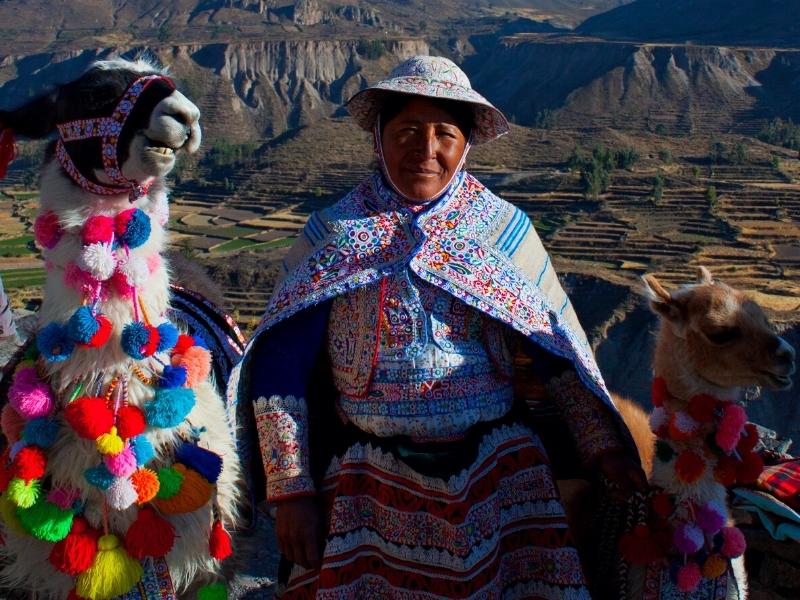
Feel the magic and the energy of Cusco and Machu Picchu, then continue to where the legend began – Lake Titicaca, to get off the beaten path and immerse yourself in the local culture and enjoy the peace and tranquility on the shores of the Lake.

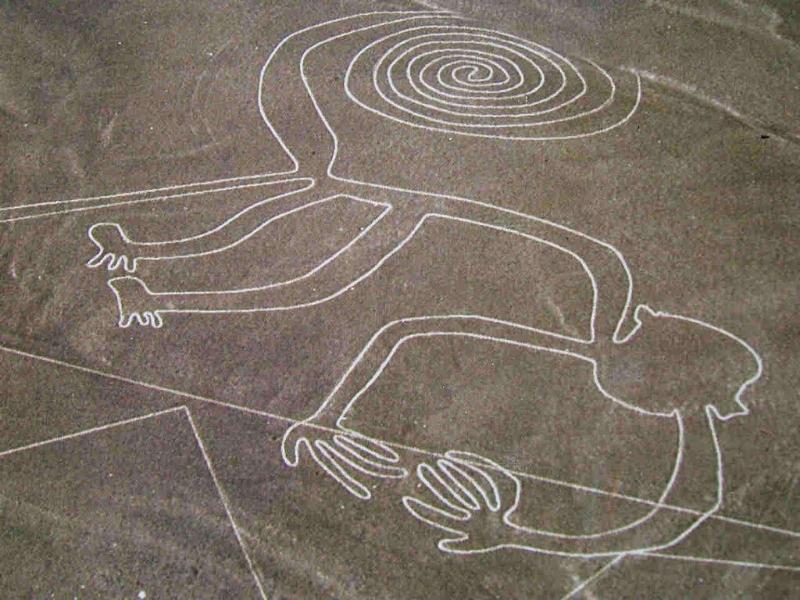
Visit Peru and discover its highlights from Lima to Cusco on an exciting journey that encompasses modern cities and ancient worlds. From the depths of the Colca canyon to the heights of the Andes and on to the unique islands of Lake Titicaca, be immersed in fascinating Peruvian culture while discovering its history buried deep within the walls of lost cities.


Colours of Peru calls to you with all the allure of the ancient and the mysterious. From the soaring peaks of the Andes to the lush Amazon Rainforest, from the pre-Colombian ruins in the mountains to the Spanish colonial mansions on the coast, 14 Days in Peru offers you exciting adventures and unique experiences.
